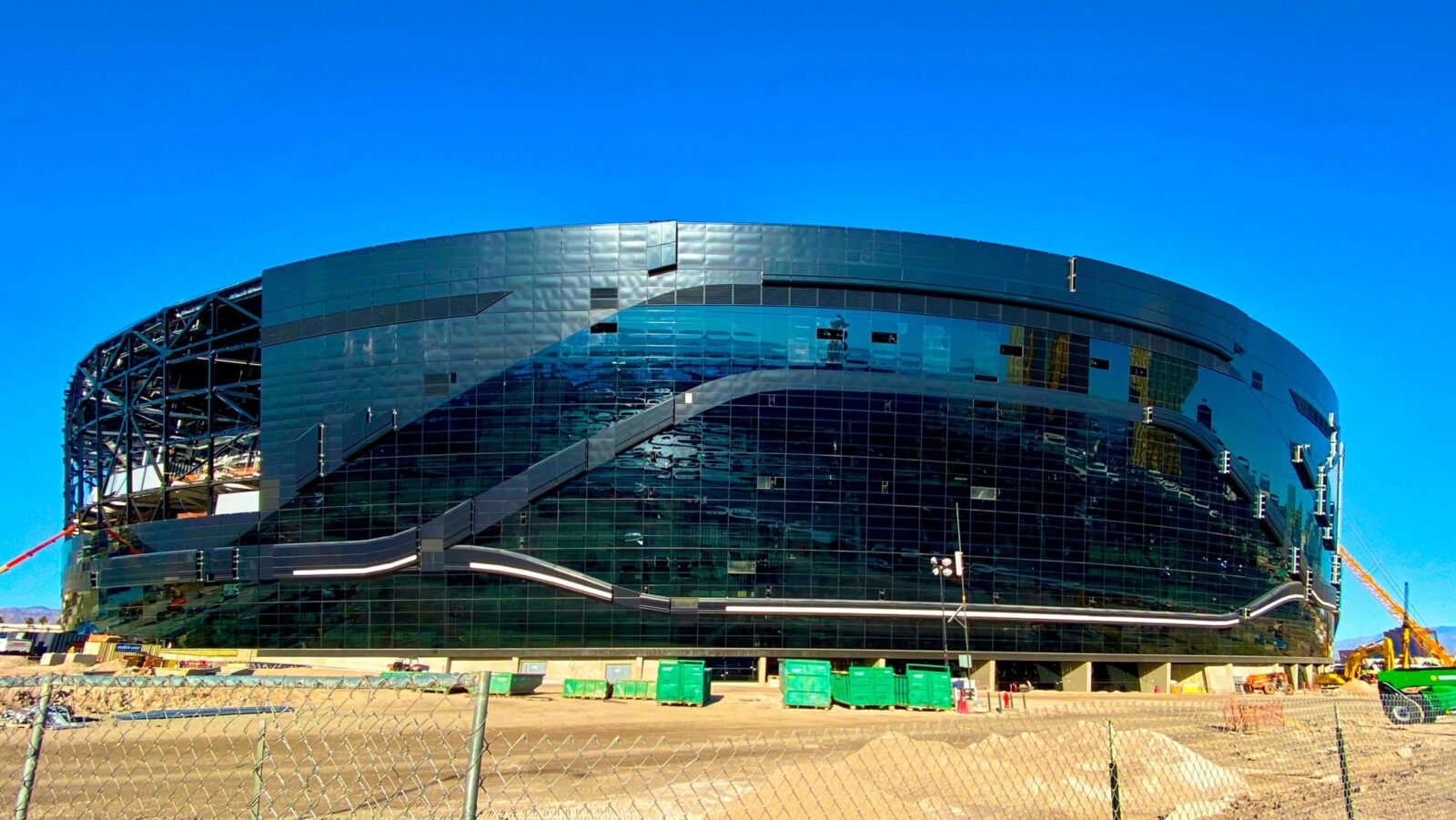What had been reported on the Internet for months was confirmed early this week as the intricate cable-system roof at the new $1.8 billion Allegiant Stadium is behind schedule.
Now that the delay in the final raising of the Allegiant Stadium roof has been confirmed, the world and Raider Nation will hear more from project officials and the team at today’s Las Vegas Stadium Authority Board meeting.
The good news is we already know the reasons why the roof is behind schedule and won’t be completed until May – just over two months before the entire stadium is slated to be finished. And while we might hear some more questions and in-depth answers from the Board and the Raiders today, we wanted to run through the how and why of the delay.
How Did it Get 60+ Days Behind Schedule?
According to the report submitted for today’s LVSA board meeting, the main culprit: bolts. As the construction and engineering team were raising the system, these bolts failed and, as a result, the progress had to be halted.
“…but that the bolts have been tested and meet the design criteria as specified by the project’s structural engineers,” the report from Grand Canyon Development Partners (GCDP) said.
GCDP serves as the Authority Construction Representative – essentially a third-party watching over the project for the Board and the public interest.
So if the bolts are good, why the delay?
Compression Ring Must Be Repaired
Because of the bolt failure on the initial attempt to raise the roof, damage to the compression ring makes it necessary for repairs there. Because the initial process, and bolts used didn’t work as they expected, the process must be re-engineered and changed.
“That said, the compression ring will need to be repaired and have its integrity certified before cable-net lifting can resume,” GCDP said in its report. “A new procedure is now being developed by the engineers and construction team, and the project schedule will be updated accordingly.”
Next, could the lack of a closed roof cause further delays?
Weather Could Cause More Delays
Although the chances are remote, due to the Allegiant Stadium roof not being closed until later in the project, other parts of the stadium will now be exposed to the elements much longer than anticipated. This could cause further delays should Las Vegas experience weather anomalies or a wetter than average winter and spring.
“Because of the delay in the overall building enclosure, there is the possibility of weather damage as more finish work is put in place,” the GCDP report states. “Our assessment is that the TCO (temporary certificate of occupancy) date may be in jeopardy if weather (rain) causes damage to interior finishes.”
Las Vegas’ annual rainfall average is just over 4-inches so excessive rain storms are not anticipated as forecasters are predicting a below average rain year.
It is worth noting: 2019 was Las Vegas’ 9th wettest year on record as the area recorded 6.87″ of rain at McCarran International Airport.
Are project managers and the independent observer worried about delay?
Roof Delay Can Be Mitigated Says Watchdog
Of course, any project would like to hit every single milestone and deadline on time. As Las Vegas knows, having seen its share of massive construction projects, they never go perfectly or without challenges.
The roof delay is a very visible one which makes it much more sensational to the average observer, fan or Las Vegas resident, but it isn’t as big of a concern as you might think.
“Of the many possible situations and potential delays that a project of this size and complexity can experience, the cable-net delay is one that attracts attention because of its distinctiveness,” the GCDP report stated. “The experience of the contractor and its ability to adjust activities in reaction to the current situation leads us to believe that the cable-net delay can be mitigated, however, we will continue to closely observe and report our findings.”
In essence, the stadium construction watchdog is saying: this is getting a lot of attention but there aren’t major concerns it will, in anyway, set the project back or delay completion by August 31. That said, GCDP did say it will continue to monitor the situation carefully on behalf of the Board and taxpayers.
What about the rest of the stadium construction? Is it on schedule?
Other Work is Ahead or On Schedule
Despite the attention the roof system has garnered, other parts of the stadium are cruising along and even ahead of schedule.
Here’s a list of some major pieces of the project and their progress:
- Lower bowl precast installation was completed in eight days (two ahead of schedule).
- All four lanai doors have been installed as scheduled.
- Support framing has been completed for the Al Davis Memorial torch feature honoring the legendary Raiders owner.
- Interior bowl excavation is complete and the layout for under-slab drainage, grade beams, raids and slab on grade are now underway.
- The site area is receiving final grading and curbs, sidewalks and driveways are being installed.
- The scoreboard secondary steel and catwalks are being installed.
- Seating rail installation is continuing on schedule.
- Exterior enclosure work is progressing ahead of schedule.
- Suites are being framed and are ready to receive drywall.
- Field tray construction has commenced as planned and the press area is progressing, although slightly behind schedule.
A project the size of the 65,000-seat Allegiant Stadium has many moving parts and simultaneous projects all happening at once. And, even with the setback with the roof, the Raiders future home looks to be on time to schedule the stadium’s first event scheduled for August 16, 2020.
Listen to our latest Silver and Black Tonight on CBS Sports Radio 1140 interview with Las Vegas Review-Journal reporter Rick Velotta on the Raiders stadium roof delay.

